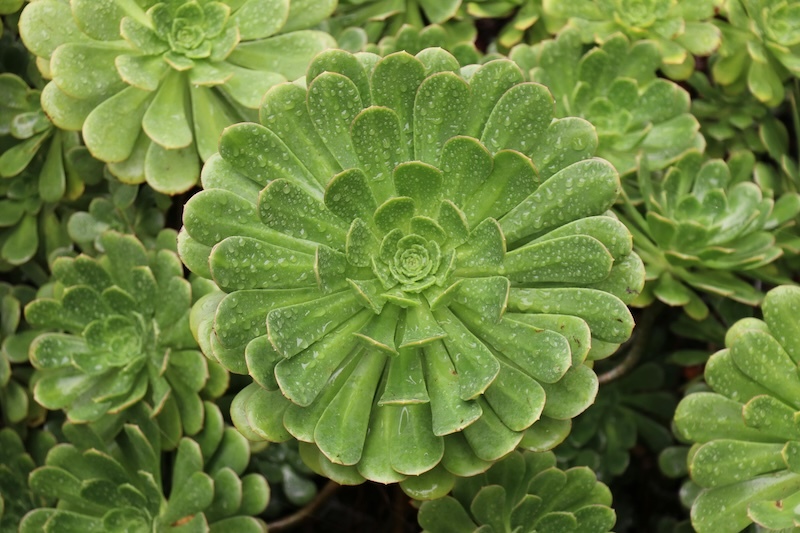Aeonium Is Dying
Over-watering is the most common reason that Aeonium plants fail to grow. The plant does not depend on moisture in the soil, storing water in the fleshy, spoon-shaped leaves instead of its roots. Often the cause of overwatering is not letting the soil dry fully between sessions or not having enough drainage holes in the bottom of the container.
Signs of overwatering sometimes mimic underwatering. Browning or yellowing of leaves and leaves dropping could indicate either condition, although overwatered succulents will also have mushy stems and leaves and possibly stems that are turning brown or black with rot. Repotting in a container with better bottom drainage and fresh potting mix specifically for succulents and cacti usually remedies the situation.
Another reason that Aeonium might appear that it is dying is that it may actually be dying. Monocarpic plants like Aeonium die after they produce flowers. The tree type Aeonium typically only loses one or two branches at a time due to natural dieback. Deadheading the stem all of the way to the main “trunk” of the plant will remove the spent growth and help the rest of the plant to continue growing.

Aeonium Leaves Turning Yellow
Yellowing leaves can be a sign that your Aeonium needs watering more often, to be moved to a location in more direct light, or if it is only the oldest (outer ring) leaves, part of the natural shedding and growth process. Leaves that are more pale than normal also indicate the need for stronger light. Aeonium placed in medium or lower light levels tends to get leggy and spindly, losing its bright colors.
Aeonium Pests
Aeonium generally is free from pests, even when grown in an artificial setting like indoors. Mealybugs are the most common pest to take advantage of an Aeonium growing in poor conditions or that is extremely unhealthy. Mealybugs appear on the undersides of leaves and in the joins of leaves and stems. The sap-sucking insects are small, pinkish or white with a sometimes waxy or fuzzy coating that protects them from predators.
Infestations will multiply rapidly but can be stopped completely when diagnosed and treated early. Treat mealy bugs the same as other sap suckers by quarantining the affected plant and then spraying with a soft soap spray until all of the leaves are coated top and bottom. Use rubbing alcohol and a cotton swab to remove and kill individual mealy bugs if the infestation is small.
Aeonium Diseases
Diseases that grow in high humidity environments and consistently damp soil are not typically an issue for Aeonium and their preference for all things dry. Root rot may be a concern for plants that are continuously overwatered and also planted in the wrong type of potting mix. Peat-free soils will drain completely and often do not hold moisture for long periods of time.
Overwatering during the summer dormancy period can also lead to root rot. Dormant plants require minimal moisture in the soil and are able to rely on the moisture stored in their leaves. Only water dormant plants every 3-4 weeks just to keep the soil from shrinking away from the sides of the container.

Aeonium Not Blooming
Aeoniums can be unpredictable when it comes to timing their blooming. Once Aeoniums bloom the plant will die without leaving any plantlets or pups to continue the life cycle. The plants can grow for 2, 5, or even longer without blooming and then suddenly decide the time is right to produce a bloom to develop progeny in the form of seeds.
Feeding large amounts of fertilizer will not encourage blooming to begin and will just result in leggy growth that is weak and more susceptible to disease and pests. And really, it is much better to keep the plant from blooming altogether for as long as possible. Removing stems that bloom can help the overall plant live a bit longer.
Sources: “Aeonium” Wisconsin Horticulture. www.hort.extension.wisc.edu

Author Robbin Small - Published 27-12-2024 |
